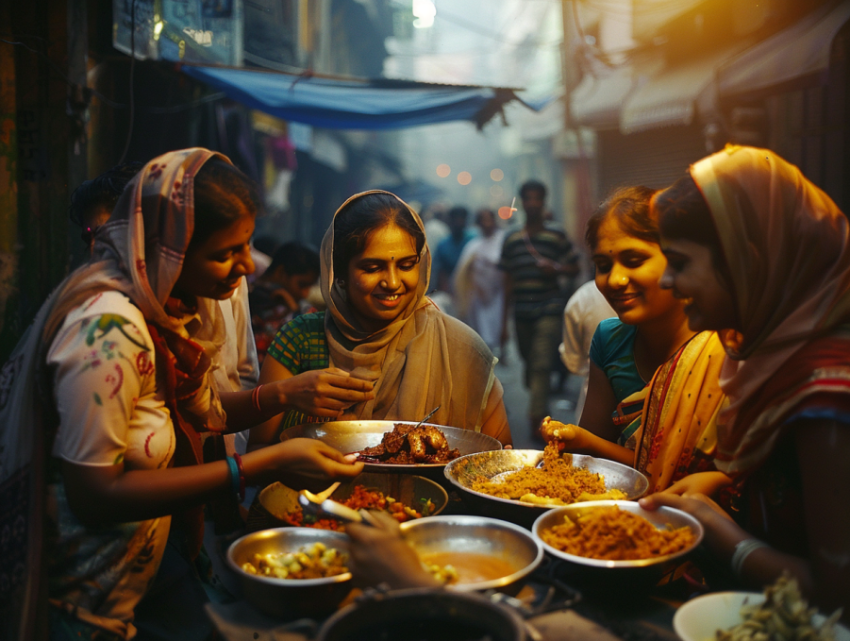









Understanding People Groups: Diversity, Dynamics, and Social Structures
A "people group" can be broadly defined as a collection of individuals who share common characteristics, interact with each other, and have a sense of shared identity or belonging. These groups can range in size from small, intimate gatherings to large, complex societies. Understanding people groups is fundamental to sociology, anthropology, psychology, and other social sciences, as groups play a crucial role in shaping individual behavior, social structures, and cultural norms. This exploration examines the diverse types of people groups, the dynamics that influence their interactions, the formation of social identities, and the profound impact of groups on individuals and the broader society.
1. Types of People Groups:
People groups can be categorized based on various factors, including shared characteristics, purpose, and level of organization:
- Primary Groups: Small, intimate groups characterized by close, personal relationships, frequent interaction, and strong emotional bonds. Examples include families, close friends, and tight-knit communities.
- Secondary Groups: Larger, more impersonal groups formed around a specific purpose or task. Interactions are typically more formal and less emotionally intense than in primary groups. Examples include workplaces, professional organizations, and school classes.
- In-Groups and Out-Groups: Social groups that individuals identify with (in-groups) and those they do not identify with (out-groups). This distinction can lead to prejudice and discrimination.
- Reference Groups: Groups that individuals use as a standard for evaluating themselves and their behavior. These groups can influence attitudes, values, and aspirations.
- Formal Organizations: Structured groups with clearly defined roles, hierarchies, and goals. Examples include businesses, government agencies, and non-profit organizations.
- Informal Groups: Groups that emerge spontaneously based on shared interests, friendships, or common goals. They often lack formal structure or rules.
- Ethnic Groups: Groups that share a common cultural heritage, ancestry, language, and often a sense of shared history and identity.
- Religious Groups: Groups united by shared religious beliefs, practices, and values.
- Social Classes: Groups based on socioeconomic status, often determined by factors like income, education, and occupation.
- Communities: Groups of people living in the same geographical area or sharing common interests and a sense of belonging.
- Online Communities: Groups that interact primarily through the internet, such as social media groups, online forums, and gaming communities.
- Gangs: Often associated with criminal activity. They typically have a defined territory, membership, and set of rules.
- Cliques: Exclusive groups of people, often found in school or social settings.
- Teams: Groups of people working together to achieve a common goal, such as in sports or the workplace.
- Crowds: Temporary gatherings of people in the same physical location.
- Mobs: Emotionally charged crowds that can engage in unruly or violent behavior.
2. Group Dynamics:
Group dynamics refer to the patterns of interaction, influence, and behavior that occur within and between groups. Key aspects of group dynamics include:
- Roles: The expected behaviors and responsibilities of individuals within a group.
- Norms: Shared rules and expectations that guide behavior within a group.
- Status: The relative social position or rank of individuals within a group.
- Cohesion: The degree to which group members are attracted to each other and to the group as a whole.
- Conformity: The tendency for individuals to align their attitudes, beliefs, and behaviors with those of the group.
- Groupthink: A phenomenon where the desire for harmony or conformity within a group leads to irrational or dysfunctional decision-making.
- Social Influence: The ways in which individuals' thoughts, feelings, and behaviors are influenced by others in a group setting.
- Leadership: The process of influencing and guiding a group toward achieving its goals.
- Conflict: Disagreements or tensions that arise between group members or between different groups.
3. Social Identity and Group Membership:
Group membership plays a significant role in shaping individuals' social identities:
- Social Identity Theory: A theory that proposes that individuals derive part of their self-concept from their membership in social groups.
- In-Group Bias: The tendency to favor members of one's own group over members of other groups.
- Stereotyping: Generalizing about the characteristics of a particular group, often leading to prejudice and discrimination.
- Prejudice: Negative attitudes or feelings toward members of a particular group.
- Discrimination: Unfair treatment of individuals based on their group membership.
4. Impact of Groups on Individuals and Society:
Groups have a profound impact on both individuals and society:
- Socialization: Groups, particularly primary groups like families, are crucial agents of socialization, teaching individuals the norms, values, and behaviors of their culture.
- Social Support: Groups provide emotional, social, and practical support to their members.
- Behavioral Influence: Group norms and pressures can significantly influence individual behavior, both positively and negatively.
- Collective Action: Groups can mobilize individuals to work together toward common goals, such as social change or political action.
- Social Order: Groups contribute to social order by establishing norms, enforcing rules, and providing a sense of belonging.
- Social Inequality: Group membership can also be a source of social inequality, as some groups have more power, resources, and status than others.
5. Studying People Groups:
Various disciplines study people groups and their dynamics:
- Sociology: Examines social structures, group interactions, and the impact of groups on society.
- Social Psychology: Studies how individuals' thoughts, feelings, and behaviors are influenced by the presence of others and by group membership.
- Anthropology: Examines human cultures and societies, including the role of groups in different cultural contexts.
- Organizational Behavior: Studies group dynamics and behavior within organizations.
Conclusion:
People groups are fundamental to human experience, shaping our identities, influencing our behavior, and structuring our societies. From intimate primary groups to large, complex organizations, groups provide a sense of belonging, support, and shared purpose. Understanding the diverse types of groups, the dynamics that govern their interactions, and their impact on individuals and society is essential for navigating the complexities of social life and for building a more just and equitable world.
People Group, Group Dynamics, Social Group, Primary Group, Secondary Group, In-Group, Out-Group, Reference Group, Formal Organization, Informal Group, Ethnic Group, Religious Group, Social Class, Community, Online Community, Social Identity, Social Identity Theory, Group Membership, Socialization, Social Support, Social Influence, Conformity, Groupthink, Leadership, Conflict, Roles, Norms, Status, Cohesion, Stereotyping, Prejudice, Discrimination, In-Group Bias, Collective Action, Social Order, Social Inequality, Sociology, Social Psychology, Anthropology, Organizational Behavior, Group Behavior, Group Processes, Group Development, Group Formation, Group Structure, Group Performance, Group Decision-Making, Teamwork, Collaboration, Cooperation, Competition, Social Network, Social Capital, Social Movements, Crowd Psychology, Mob Mentality, Group Polarization, Deindividuation, Social Loafing, Bystander Effect, Group Therapy, Group Counseling, Team Building, Diversity, Inclusion, Equity, Social Justice, Human Relations, Intergroup Relations, Cross-Cultural Communication, Group Communication, Small Group Communication, Large Group Communication, Community Building, Social Cohesion, Social Integration, Social Exclusion, Marginalization, Social Stratification, Social Mobility, Power Dynamics, Authority, Influence, Persuasion, Social Norms, Cultural Norms, Deviance, Social Control, Social Change, Group Conflict Resolution, Negotiation, Mediation, Group Facilitation, Group Leadership Styles, Group Membership Benefits, Group Membership Costs, Group Affiliation, Group Identity Formation, Group Loyalty, Group Pressure, Group Influence Tactics, Group Problem-Solving, Group Creativity, Group Innovation, Group Effectiveness, Group Efficiency, High-Performing Teams, Virtual Teams, Global Teams, Cross-Functional Teams, Self-Managing Teams, Team Leadership, Team Development, Team Dynamics, Team Building Activities, Teamwork Skills, Collaboration Skills, Communication Skills, Conflict Management Skills, Diversity in Groups, Gender and Groups, Race and Groups, Culture and Groups, Group Size, Group Composition, Group Cohesiveness, Group Norms and Values, Group Culture, Group Climate, Group Morale, Group Motivation, Group Goals, Group Objectives, Group Outcomes, Group Evaluation, Group Assessment.

